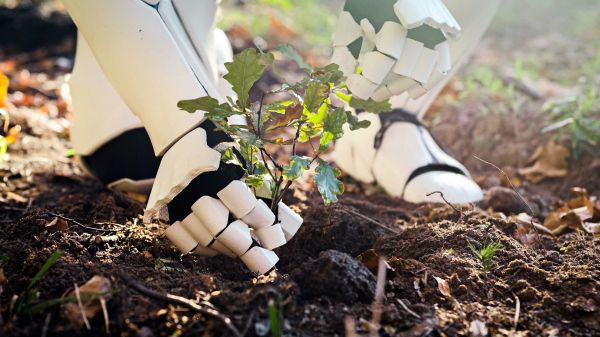Technology and Environmental Education: What the Research Actually Says

You're leading students through a local wetland when one spots an unfamiliar bird. "Can we identify this?" they ask, pulling out their phone. The old answer might have been an automatic "no screens, we're focusing on being outdoors." But recent research suggests the situation is more complex than that simple rule allows.
View eeRESEARCH Collection: AI and Technology
Environmental educators are grappling with a fundamental question: how do digital tools fit into nature-based learning? The answer, according to multiple studies, isn't about choosing sides, it's about understanding when technology serves educational goals and when it doesn't.
When Digital Tools Actually Work
Recent research challenges common assumptions about technology in environmental education. Rather than competing with nature experiences, digital tools can enhance them when applied strategically. The critical factor is understanding when technology serves learning goals and when it interferes with them.
Take augmented reality applications. Students can point devices at a polluted waterway and see data overlays showing water quality changes over time, or visualize food webs in real ecosystems. Research consistently shows AR improves student engagement and environmental literacy, particularly for younger learners who struggle with abstract concepts.
However, successful implementation requires careful planning. Technology integration isn't about adding digital elements to existing lessons, it requires thoughtful consideration of content selection and pedagogical design.
Professional Development Creates Ripple Effects
Evidence from teacher training programs reveals significant multiplier effects when educators develop technological competencies. One study tracked 284 educators who received intensive renewable energy training. These teachers subsequently reached over 35,000 students, with approximately 28,000 receiving direct instruction using new content and methods.
The most effective programs emphasized hands-on experience rather than theoretical presentations. Educators installed solar panels, troubleshot wind turbines, and gained practical familiarity with the systems they would later teach. This experiential approach built confidence and competence that translated directly into classroom effectiveness.
AI as a Creative Tool
Artificial intelligence applications in environmental education show unexpected promise. Fifth-grade students in Israel used AI tools to create comic strips about invasive bird species, developing nuanced understanding of ecological relationships rather than simplistic narratives about "good" and "bad" species.
The AI didn't replace critical thinking but supported it. Students learned to formulate better questions, communicate more effectively with technology, and collaborate on creative solutions. The process developed what researchers call "21st century skills", creativity, critical thinking, collaboration, and communication, while maintaining focus on environmental content.
Learning from International Approaches
Global perspectives on environmental education reveal different integration strategies. Countries like Germany and Denmark embed renewable energy and sustainability concepts throughout traditional STEM curricula rather than creating separate environmental programs. This approach develops broad foundational skills that transfer across multiple career paths.
These countries also maintain strong industry partnerships and stable national policies that support long-term educational planning. The combination of integrated curricula and systematic industry engagement creates more effective workforce preparation than traditional advisory models.
Preserving Essential Direct Experiences
Experienced outdoor educators emphasize that some learning moments require technology to step back. Students need time to develop what teachers call "nature eyes", which is the ability to observe and connect with natural environments without digital mediation. This process takes patience and often several weeks of consistent outdoor exposure.
The most valuable learning sometimes occurs in quiet, secluded spaces where students play and explore independently. Technology can document and extend these experiences, but it shouldn't intrude on the discovery process itself.
Practical Implementation
Research suggests starting with simple applications and building complexity gradually. Begin with smartphone cameras to document student discoveries, then explore how digital documentation might enhance rather than replace direct observation. Experiment with basic AR applications that overlay information onto real environments.
The most successful approach involves what researchers term "critical evaluation", or in other words assessing each technological tool based on whether it genuinely serves educational objectives. This requires moving beyond either wholesale rejection or uncritical adoption of digital tools.
Effective integration also requires adequate technical support and alignment with established environmental education standards. Technology works best when it connects outdoor experiences with broader learning communities, extending environmental education beyond individual classrooms.
